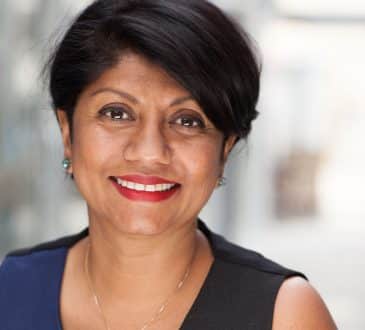Celia Tombalakian: Insights on Strategy, Innovation, and the Future of Beauty

Celia Tombalakian is a seasoned executive with a track record of driving transformation and growth in the beauty and consumer goods industries. With experience spanning global marketing leadership, product innovation, and strategic integration, Celia’s focus has always been on blending creativity with data-driven decision making. Most recently, as Global Vice President of Marketing for Sally Hansen, she led initiatives that positioned the brand as a leader in product innovation and consumer connection. Today, she is an advocate for leveraging technology and strategic foresight to shape the future of consumer experiences.
Building Innovation and Driving Growth in Consumer-Centric Markets
What’s the secret to keeping legacy brands like Sally Hansen relevant in a rapidly evolving market?
This is a balance between honoring its heritage and embracing innovation. Legacy brands carry the advantage of awareness, trust, and familiarity, but they also risk growing old with their consumers if they don’t anticipate or adapt to modern consumers’ expectations. Innovation can take many forms, such as storytelling, new product launches, and marketing activations like influencer partnerships.
For Sally Hansen, we honored its ethos of trust, quality, and accessibility while staying current by introducing color trends, special effects, new ingredients in our care products, or new segments of nail color that reflected shifts in consumer behavior or preferences. For example, we introduced quick-dry and plant-based products. Another important strategy we employed was creating limited edition collections or collaborations with other iconic, colorful brands to expand our consumer reach and join unexpected conversations.
Consumers today want brands that are authentic, transparent, and aligned with their values in a two-way conversation. Therefore, brands must plan accordingly. Adapting and leveraging new technology is also a key way to engage consumers and stay relevant, such as AI personalization or AR/VR Try-Ons. For example, Sally Hansen was the first brand to deploy AI technology that allowed a consumer to virtually try on a Sally Hansen shade in real time on their own hand, rather than on a photo or a stock model’s hand with prescribed skin tones. Embracing technology and using it to enhance consumer engagement with your brand is crucial.
How do you balance creativity with data in decision-making?
For effective brand management, it is critical to foster an environment that values both creative or innovative thinking and analytical insights or data. In many cases, consumer insights provide the springboard for innovative ideas, as a brand seeks to respond to changes in attitude or behavior, or to create a new desired end-state. These insights identify opportunities for growth and highlight areas where a brand can expand. They can also serve as the foundation for a creative campaign. For example, CGI hyper-realistic campaigns had a significant viral impact on many beauty brands last year. Performance metrics are also a critical part of evaluating what went well, what didn’t, and how to course-correct.
It’s also important to remember that data is only as powerful as the context you give it. I see technology and data as enablers—not decision-makers.
What role does technology play in shaping the future of consumer experiences?
Technology is transformative, but it must remain human-centric. AI, for instance, can predict consumer preferences, offer personalized recommendations, and optimize supply chains, but it’s the emotional connection that creates true brand loyalty.
In beauty, augmented reality (AR) is already revolutionizing how consumers try and purchase products. However, what excites me most is the potential for AI to drive personalization at scale. We’re now seeing foundations customized to your exact skin tone, hair care products tailored to your specific curl type, and vitamin mixes designed to optimize your health. These possibilities are redefining how brands connect with consumers and create meaningful experiences.
What strategies have you found most effective for driving growth in competitive categories?
In fast-paced industries like beauty, the ability to pivot quickly based on consumer feedback and market dynamics is essential. It’s important to maintain a focus on consumer-centric innovation by identifying trends, leveraging feedback in real time, and iterating quickly. It’s also critical to build strong brand differentiation, ensuring that unique positioning shines consistently through all initiatives. Enhancing distribution channels is key, as brands strive for an omni-channel presence.
For Sally Hansen, with the importance of brick-and-mortar retail to the brand, we formed strategic retail partnerships to create excitement and secure off-shelf space with limited edition collections, such as Sally Hansen with Target & DVF. We also collaborated to amplify sell-through during key consumption periods, like Spring/Easter with Sally Hansen x Peeps or Back to School/Halloween with Sally Hansen x Reese’s.
Lastly, execution is king. The best strategy or intentions won’t drive growth unless you have operational excellence behind them.
What challenges do you see brands facing in today’s market, and how can they overcome them?
One major challenge is staying authentic while scaling personalization. Consumers expect brands to understand and reflect their values, yet they also demand mass accessibility. Balancing those two forces requires precision.
Another challenge is the sheer pace of change. Trends emerge and fade faster than ever, and consumer expectations are constantly shifting. Brands need robust listening mechanisms—both in terms of technology and direct consumer engagement—to stay relevant.
Overcoming these challenges requires clarity of purpose. When you know your brand’s core identity and what it stands for, you can innovate without losing focus.
How do you approach fostering innovation within teams?
It starts with creating a safe space for ideas to flourish. I encourage teams to bring forward bold ideas, even if they aren’t fully formed. The best innovations often come from iterating on a kernel of an idea.
I also believe in building diverse teams—not just in terms of demographics, but in skill sets and perspectives. A mix of analytical thinkers, creatives, and strategists creates the kind of friction that leads to innovation.
Finally, I always push teams to think about the “why” behind every decision. If you can’t articulate why your idea adds value to the consumer, it’s not ready.
How can AI and digital transformation improve the sustainability of consumer brands?
AI can help brands make smarter, more sustainable decisions at every stage of the value chain. For instance, predictive analytics can optimize inventory, reducing waste. Similarly, AI can model the environmental impact of packaging decisions, enabling brands to choose more eco-friendly options without sacrificing quality or cost.
Digital transformation also enables greater transparency, which is critical to sustainability. Consumers increasingly demand to know where products come from and how they’re made. Technology allows brands to provide that information in a compelling, accessible way.
What advice would you give to someone looking to disrupt a traditional industry like beauty?
Disruption doesn’t mean throwing everything out. It means identifying where the industry is falling short and finding smarter, more consumer-centric ways to solve those problems.
Start by understanding the consumer deeply—what they want, what frustrates them, and what excites them. Then, challenge assumptions about how things have always been done.
Finally, be relentless about execution. A great idea is only as good as its implementation. Build a team that shares your vision and ensure every detail supports your larger goals.
Closing Thoughts
Celia Tombalakian’s insights provide a practical perspective on navigating the intersection of strategy, creativity, and technology. As industries contend with evolving consumer expectations, her emphasis on human-centered innovation and operational excellence offers a roadmap for achieving both brand growth and lasting impact.
Have you read?
Best Fashion Schools In The World.
Best Medical Schools In The World.
Best Business Schools In The World.
World’s Best International High Schools.
Best Hospitality And Hotel Management Schools In The World.
Bring the best of the CEOWORLD magazine's global journalism to audiences in the United States and around the world. - Add CEOWORLD magazine to your Google News feed.
Follow CEOWORLD magazine headlines on: Google News, LinkedIn, Twitter, and Facebook.
Copyright 2025 The CEOWORLD magazine. All rights reserved. This material (and any extract from it) must not be copied, redistributed or placed on any website, without CEOWORLD magazine' prior written consent. For media queries, please contact: info@ceoworld.biz








